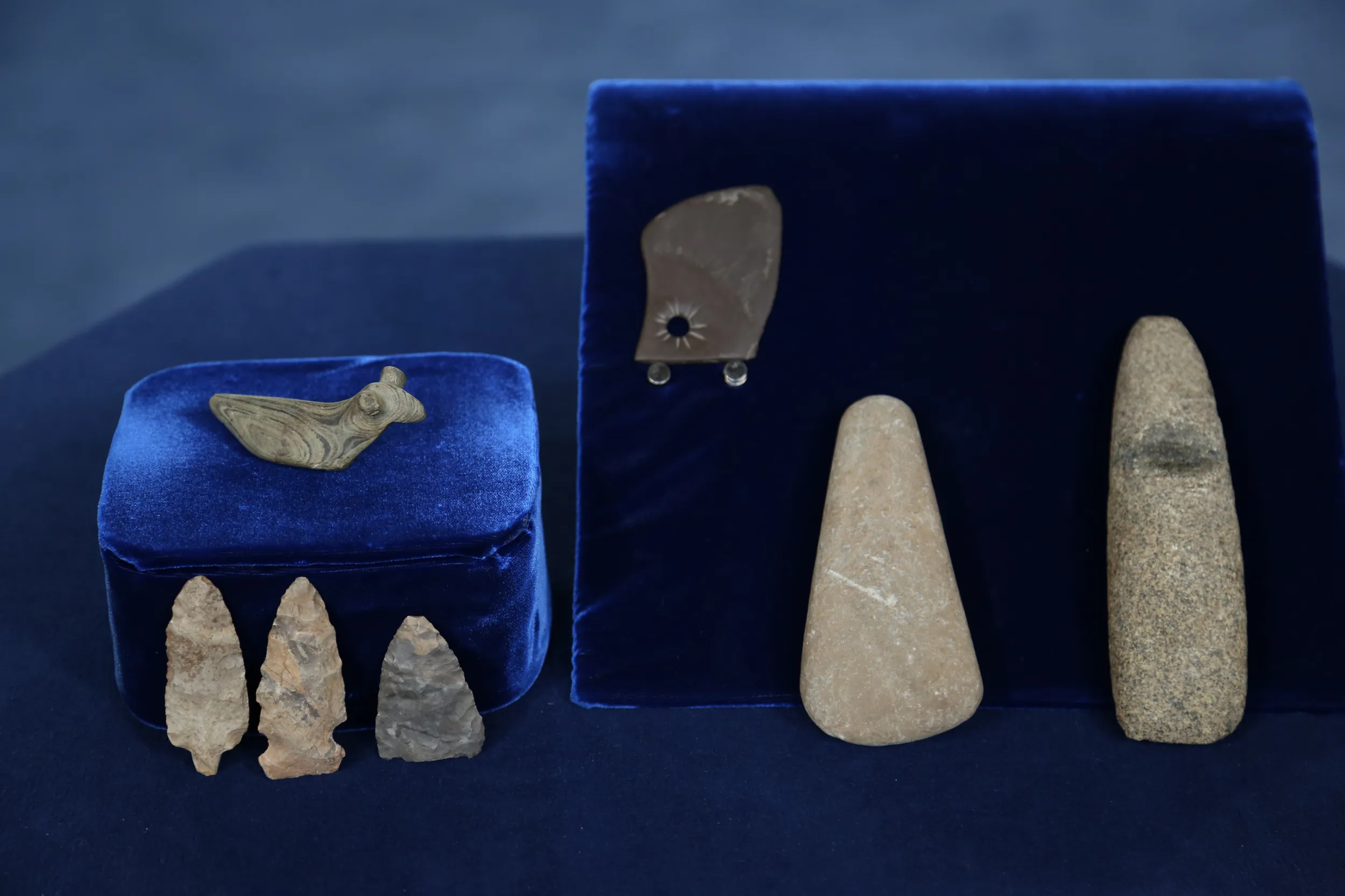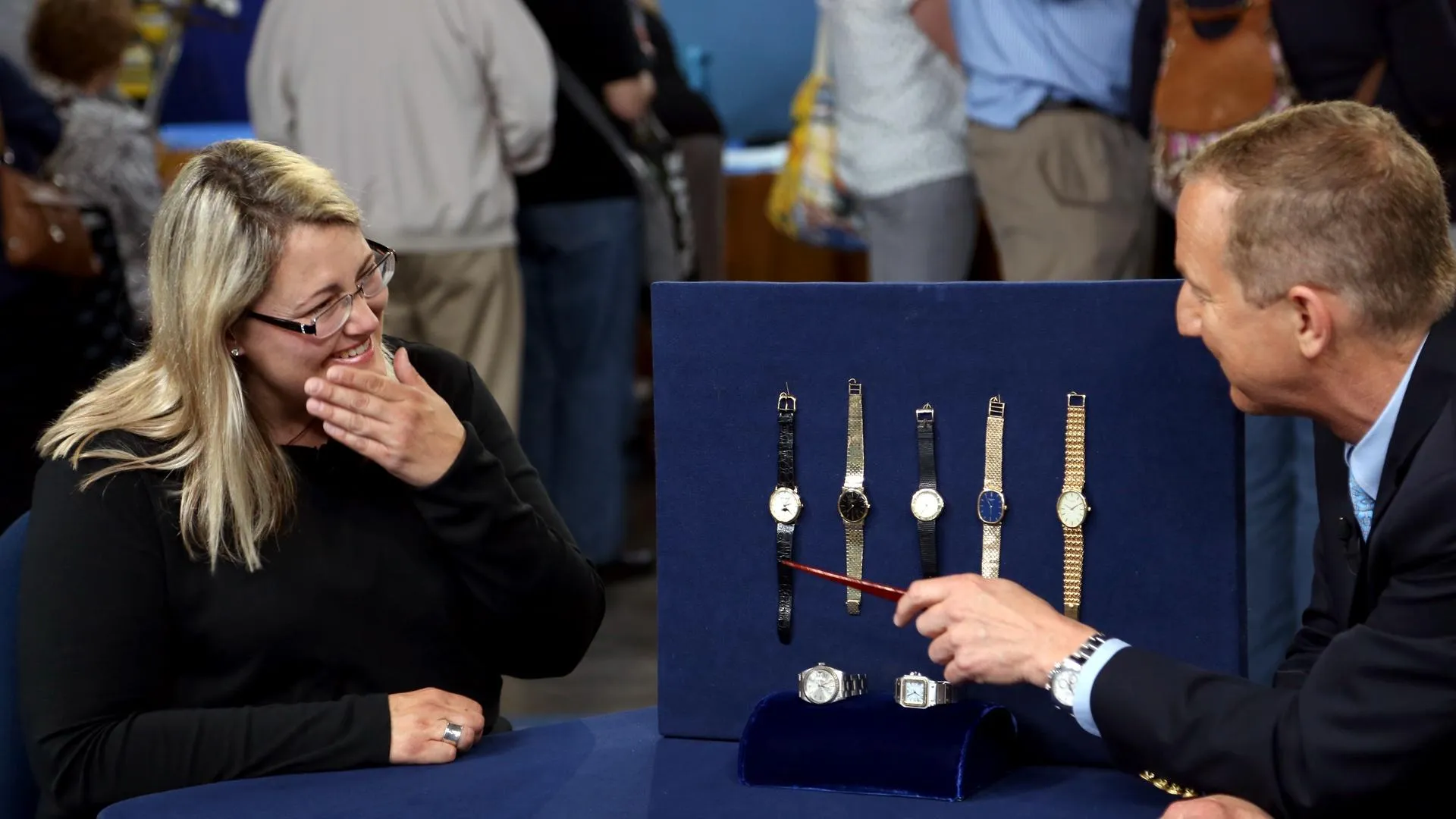GUEST: These are Native American artifacts that we found on the family farm in Ray Township. Mostly, my grandpa found all these artifacts on the farm just from plowing up fields and spotting them, and he's collected them. They've gotten passed down to me, but we don't know a lot about certain artifacts, and that's why I brought them here today for you to look at.
APPRAISER: Well, I'm glad you did. Most of them are really typical of the type that you find in this area with the arrowheads and the ax heads. But the two pieces that are of real interest here are these two here. I'll start with this one. I think this one is probably a knife. This leading edge here is quite sharp, and I think the hole was probably drilled there because it's the perfect way to carry it around as a small knife like that. It's made out of a type of slate, I think. There's a nice bit of decoration just around the hole there. I'm not sure exactly how the hole was done. It's a rather thin piece of slate, so they might have just pecked the hole to start with and then smoothed it out with some abraded material. Or they might have used a bow drill on it, and that's a drill that they would just hold part of it in their mouth and just go up and down with it and so it gradually goes all the way through, and they'd use sand to abrade it and go all the way through. But this is the little beauty here. This is all part of the Woodland culture, which starts about 1,000 B.C. to 1,000 A.D., and it extends from the eastern part of Canada all the way down to the Gulf Coast. This is very typical of this area, and this sort of stone is also found from Michigan all the way through to Ohio. This is what's known as a birdstone, and it's a rather special one because this is known as the popeye birdstone, for obvious reasons. It's made out of a banded slate, and it was used probably as a atlatl weight. There are lots of these around, and unfortunately-- I'll probably get some flack for this-- but maybe 90% of them are not correct. When these started to be found in the 19th century, people started making them out of all sort of exotic stones. But this one we're really fortunate is absolutely right and real. Underneath, we have these holes that are drilled in an absolutely typical way that they would be if they're real. But also, it's the surface. When you find these archaeological pieces, the surface is key with them all. And this type of stone, when it's been buried a long time, it has this slightly dusty surface on it. It could be a little sharper, the sculpture: the nose has got a little bit of damage on the front and it's quite diminutive. Do you have any idea of the value of these?
GUEST: I have no idea.
APPRAISER: These are sort of found everywhere and are usually $5 to $10 or something, and these celts here, around about sort of the $100 to $150 mark. This is a super little object here and I think probably $300 to $400.
GUEST: Wow.
APPRAISER: But this is the prize, and I feel quite comfortable with giving a retail value at $4,000 to $6,000.
GUEST: No kidding, wow.
APPRAISER: It's a wonderful little thing. It's a popeye birdstone.
GUEST: Nice, thank you.
APPRAISER: Oh, you're quite welcome.
GUEST: Very neat.





